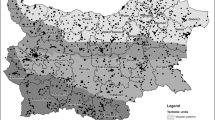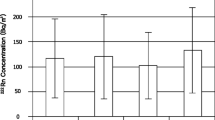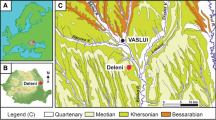Abstract
The aim of this study is to assess the variation of indoor radon concentrations as a function of the construction year of the dwellings based on the data gathered by the nationwide radon survey performed in the framework of the Greek Radon Action Plan (GRAP). A radon measurements management system was developed and is under implementation to host all measurements. Within this framework, the data collected include the location and the radon concentration, as well as the construction year of the dwelling, the ventilation method and its frequency, the building materials, energy-saving class, etc. This work presents our study on the correlation between the construction year and the indoor radon concentration in the country and in the individual administrations where data were sufficient as Attica, Thessaly, etc. The main observation points out that the radon concentration decreases substantially as the focus moves from the oldest dwellings to those constructed in the 70 s, while the dwellings built from 1970 to 2000 show no trend. Although, high indoor radon concentrations in old dwellings could be attributed to structural problems, the newly built dwellings tend to show an increase in radon concentration, mainly due to the new regulation of Energy Efficiency of Buildings, established in the country in the last decade.


Similar content being viewed by others
Data availability
The datasets generated during and/or analyzed during the current study are available from the corresponding author upon reasonable request.
References
Sources and effects of ionizing radiation. 1: Sources. New York: United Nations; 2010. 463 p. (Sources and effects of ionizing radiation).
World Health Organization. WHO [Internet]. 4th ed + 1st add + 2nd add. Geneva: World Health Organization; 2022 [cited 2022 May 16]. Available from: https://apps.who.int/iris/handle/10665/352532
S. Darby, D. Hill, A. Auvinen, J.M. Barros-Dios, H. Baysson, F. Bochicchio et al., Radon in homes and risk of lung cancer: collaborative analysis of individual data from 13 European case-control studies. BMJ 330(7485), 223 (2005)
The European cancer burden in 2020: Incidence and mortality estimates for 40 countries and 25 major cancers | Elsevier Enhanced Reader [Internet]. [cited 2022 May 18]. Available from: https://reader.elsevier.com/reader/sd/pii/S0959804921004974?token=0383E62AD65DD9A67218210931972ADCDB52D4B2060C3A2B597CC6A30F8FAA122EAA8811524D3FE17FF870E65631AAD1&originRegion=eu-west-1&originCreation=20220518050941
M. Gerken, L. Kreienbrock, J. Wellmann, M. Kreuzer, H.E. Wichmann, models for retrospective quantification of indoor radon exposure in case-control studies. Health Phys. 78(3), 268–278 (2000)
An approach to natural ventilation conditions in urban apartment blockbuildings in Greece based on their architectural and constructional characteristics [Internet]. [cited 2022 May 19]. Available from: http ://dias.library.tuc.gr?show=full&locale=en
N. Papamanolis, The main constructional characteristics of contemporary urban residential buildings in Greece. Build Environ. 40(3), 391–398 (2005)
K. Fujimoto, T. Sanada, Dependence of indoor radon concentration on the year of house construction. Health Phys. 77(4), 410–419 (1999)
G. Kropat, F. Bochud, M. Jaboyedoff, J.P. Laedermann, C. Murith, M. Palacios et al., Major influencing factors of indoor radon concentrations in Switzerland. J Environ Radioact. 1(129), 7–22 (2014)
Mezartasoglou D. Energy Efficiency trends and policies in Greece. 2021
Author information
Authors and Affiliations
Corresponding author
Ethics declarations
Conflict of interest
The authors declare no conflict of interest. This work was supported by the Greek Radon Action Plan. This project has received funding from the Greek Atomic Energy Commission (EEAE).
Rights and permissions
Springer Nature or its licensor (e.g. a society or other partner) holds exclusive rights to this article under a publishing agreement with the author(s) or other rightsholder(s); author self-archiving of the accepted manuscript version of this article is solely governed by the terms of such publishing agreement and applicable law.
About this article
Cite this article
Kolovou, M., Potiriadis, C. & Kallithrakas-Kontos, N. A study on the correlation between indoor radon concentrations and the construction year of the dwellings. Eur. Phys. J. Spec. Top. 232, 1625–1629 (2023). https://doi.org/10.1140/epjs/s11734-023-00888-4
Received:
Accepted:
Published:
Issue Date:
DOI: https://doi.org/10.1140/epjs/s11734-023-00888-4




